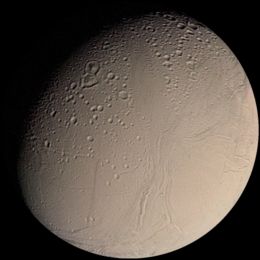Pluto's Demotion
Yesterday's vote by the International Astronomical Union to strike Pluto from the list of planets was a great teaching moment not only about the solar system but also about science in general, how our increasing understanding of the world around us requires us to constantly re-assess our thinking. Many of you may not know that before I was an urban planner, before I made universal remote controls, I spent two years as a Planetary Science major at Caltech until I got fed up with all the extra physics and math I'd need and decided to jump to jus' regular ol' Geology for my Bachelor's degree. As such, I'm glad we finally have a definition of a planet (notwithstanding Wikipedia's insistence that the IAU was "redefining" the term), and I'm also glad that the definition is based on significant physical and orbital properties of the bodies instead of arbitrary lines of demarcation or a sentimental attachment to Pluto:
(1) A planet1 is a celestial body that (a) is in orbit around the Sun, (b) has sufficient mass for its self-gravity to overcome rigid body forces so that it assumes a hydrostatic equilibrium (nearly round) shape, and (c) has cleared the neighbourhood around its orbit.
I think there are still some loose ends to be tied up in the definition, though. First is clause (a), which presumably is in there to differentiate planets from moons but also excludes extrasolar planets from achieving planet status and would also leave a hypothetical "rogue planet" not in orbit around any star without planet status, either. Why not just say, "not in orbit around another planet, dwarf planet, or minor solar system object?"
Clause (b) is good because it sets a minimum size that isn't just a dividing line at 1000 km or "the size of Pluto." (Wikipedia has an interesting list of solar system objects ranked by radius.) It's the difference between a celestial body that looks like Enceladus (a moon of Saturn):
 and one that looks like Proteus, a moon of Neptune that looks like a charcoal briquette:
and one that looks like Proteus, a moon of Neptune that looks like a charcoal briquette:
I also like that they used the term "round" instead of "spherical," since it leaves open the possibility of an ellipsoid planet.
More problematic, though, is clause (c), since "clearing the neighborhood" is a pretty vague term. At the simplest level, sure, Pluto's orbit takes it inside Neptune's, and Ceres hasn't cleared the asteroid belt. But, conversely, Neptune hasn't cleared Pluto out of its orbit, and there are small asteroids that cross even Earth's orbit. And what about objects orbiting at Lagrangian points L4 and L5? Or moons? If Pluto and Charon still had a similar orbit around each other but orbited the Sun in a much less eccentric, planet-like way, would Pluto be accused of not clearing its orbit of Charon?
I think the definition is a good start, but it's probably going to need to be refined at some point within the next 20 years as we learn more about distant objects.
Incidentally, I think the really amazing thing about study of the solar system is that planets and moons and such aren't just points of light in the sky or even things only to observe at a distance from space. These are actual places one could theoretically go, just like I could theoretically go to Antarctica or Wisconsin. And yet the environment would be so bizarre --- ice volcanoes, methane seas, carbon dioxide atmospheres, and views that are literally otherworldly. This is an actual photo from the surface of Titan:


3 Comments:
I'd made the same observation about the definition of "clearing its orbit." Technically, Neptune hasn't. Similarly, it would mean that, in theory, you could have two coorbital bodies which meet the other criteria for a planet, but which wouldn't qualify because each is in the other's orbit (perhaps, for example, exactly opposite the Sun from each other). So, yeah, that's really vague.
I also wouldn't be opposed to a plan that called everything that met the first two criteria "planets," but then further subdivided them into "classical planets" and "dwarf planets," but I'd rephrase that third clause (and tweak the first one) regardless. The key would have to revolve around a definition of "orbit" or "orbital neighborhood."
The IAU statement that a dwarf planet is not a planet at all makes absolutely no linguistic sense. The entire process by which this was done was political and seriously flawed. What we really need is a broad definition of the term "planet" with various subcategories, such as terrestrial planets, gas giant planets, rocky ice or Kuiper Belt planets, etc. The "clearing its orbit" criteria was done specifically to exclude Pluto and disqualifies Neptune, Jupiter, and Earth as well. The IAU action has created one colossal mess and must be reversed in favor of a far better planet definition. Such a definition would certainly include Pluto in one of the subcategories of "planets."
Post a Comment
<< Home